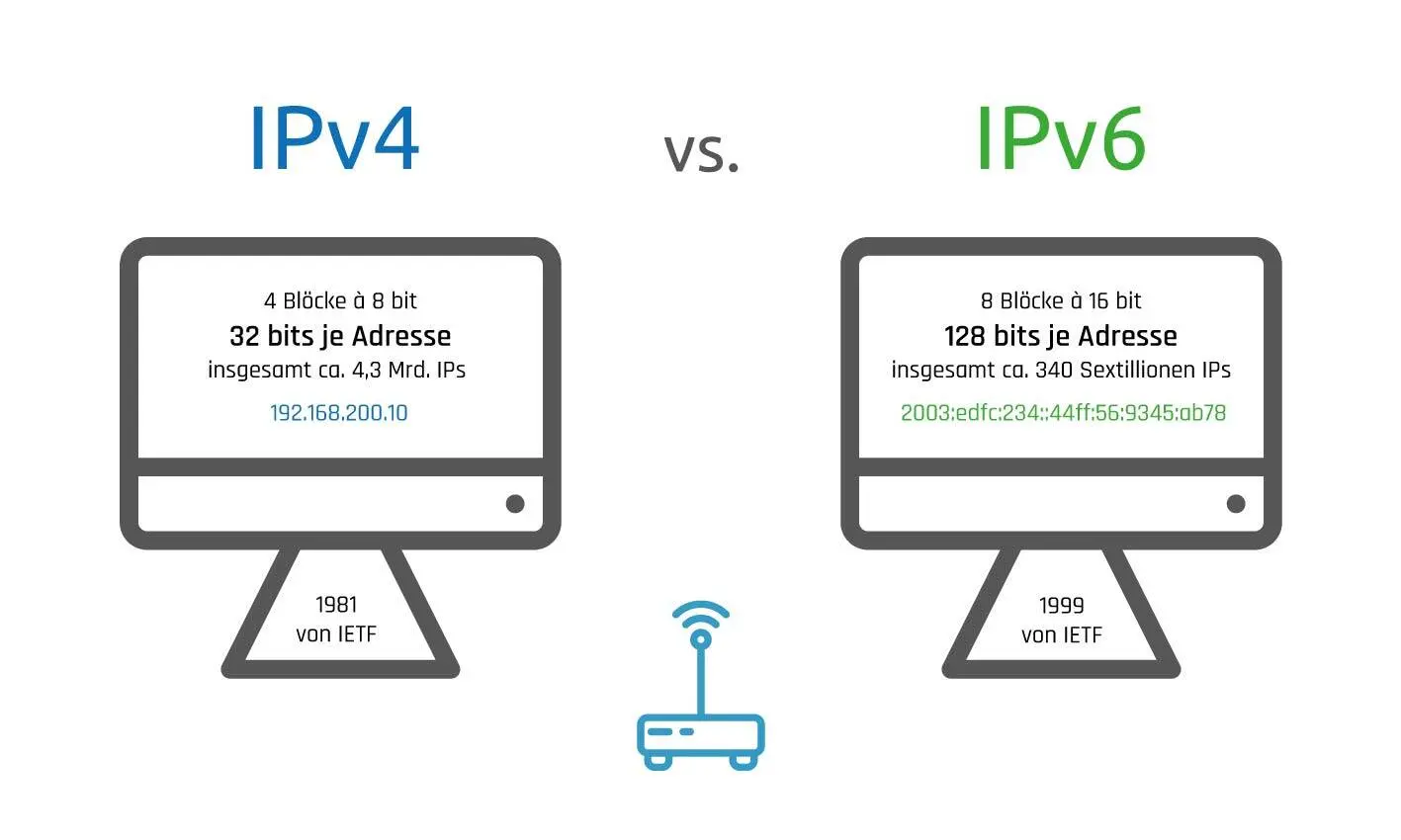
7 Disadvantages of IPv6 over IPv4
With the ever-growing need for internet connectivity, the IPv4 address pool quickly became insufficient, which led to the development of IPv6. IPv6 (Internet Protocol Version 6) was introduced to provide a much larger address space and improve upon IPv4 in other technical areas. However, despite its advantages, IPv6 has several limitations that impact its adoption and usability. Here’s a look at the disadvantages of IPv6 over IPv4.
1. Compatibility Issues with IPv4 Networks
One of the biggest challenges with IPv6 is its compatibility with existing IPv4 systems. IPv6 and IPv4 are not inherently interoperable, which means that communication between IPv6 and IPv4 devices is not straightforward. To enable communication, organizations must implement dual-stack systems, tunneling, or translation mechanisms, which can be complex and costly.
For example, dual-stack configurations allow devices to use both IPv4 and IPv6 addresses, but they increase complexity by requiring both protocols to be managed simultaneously. This requirement can slow down the transition and add extra costs to infrastructure.
2. Lack of IPv6 Support in Legacy Devices
Many older devices and systems were designed solely for IPv4 and lack support for IPv6. Upgrading or replacing these devices can be costly, and the lack of backward compatibility between IPv4 and IPv6 means that devices not designed for IPv6 cannot easily be made compatible without significant upgrades. This situation is particularly challenging for industries that rely on legacy systems, like manufacturing or utilities, where equipment replacement cycles are long.
3. Increased Complexity in Network Administration
IPv6 was designed to simplify addressing and improve routing efficiency, but it also introduces complexity in other areas. For instance, IPv6 addresses are much longer than IPv4 addresses (128 bits vs. 32 bits), making manual configuration and management challenging. Network administrators who are accustomed to IPv4 may find IPv6's hexadecimal address format difficult to manage without specialized training.
The address notation in IPv6, such as 2001:0db8:85a3:0000:0000:8a2e:0370:7334, is far more complex compared to IPv4’s format (e.g., 192.168.1.1). This complexity can increase the likelihood of configuration errors, potentially leading to network downtime or security vulnerabilities.
4. Security Concerns in IPv6 Transition
While IPv6 was designed with security improvements, such as mandatory IPsec (Internet Protocol Security), the transition phase between IPv4 and IPv6 can introduce security risks. Many organizations operate dual-stack networks during the transition period, which means both IPv4 and IPv6 are enabled on their devices and networks. This dual exposure creates more attack surfaces for malicious actors.
Additionally, IPv6 addresses are more complex to filter, and certain security tools and firewalls may not fully support IPv6 yet, increasing the risk of security loopholes.
5. Higher Implementation and Maintenance Costs
Transitioning from IPv4 to IPv6 involves a significant investment in terms of both time and resources. Many organizations face challenges with budgeting and planning for the transition due to the costs associated with upgrading hardware, software, and training personnel.
For example, replacing IPv4-only devices with dual-stack or IPv6-compatible devices can be a costly endeavor, especially for organizations with extensive IT infrastructures. Furthermore, ongoing maintenance costs for dual-stack environments can increase operational expenses, making IPv6 adoption financially challenging for some organizations.
6. Slow Adoption and Limited ISP Support
Despite being introduced more than a decade ago, IPv6 adoption has been slow, especially among ISPs (Internet Service Providers) in certain regions. Many ISPs still do not offer native IPv6 support, which hinders end users and organizations that want to transition to IPv6-only networks.
This lack of ISP support results in organizations relying on dual-stack environments or tunneling mechanisms, which adds to network complexity and can reduce the overall performance benefits that IPv6 was intended to bring.
7. Complexity of IP Renumbering
IPv6 was designed to allow for better address auto-configuration and simplified renumbering. However, renumbering a network from IPv4 to IPv6 is still a complex process, especially in large networks. IPv6 renumbering requires significant adjustments to DNS (Domain Name System), firewall rules, and routing policies, which can be time-consuming and error prone.
For organizations with large networks, especially those that operate across multiple sites or use complex subnetting schemes, renumbering presents a logistical challenge that deters a full transition to IPv6.
Conclusion
While IPv6 offers a solution to IPv4’s address exhaustion and introduces certain technical improvements, it also brings its own set of challenges. From compatibility issues with legacy systems to increased network complexity and higher implementation costs, the disadvantages of IPv6 over IPv4 have slowed down its adoption. Although IPv6 is the future of the internet, its widespread adoption remains dependent on organizations finding efficient solutions to these challenges.
For businesses and individuals considering the transition, understanding these disadvantages is crucial to making informed decisions about when and how to implement IPv6 in their network environments.